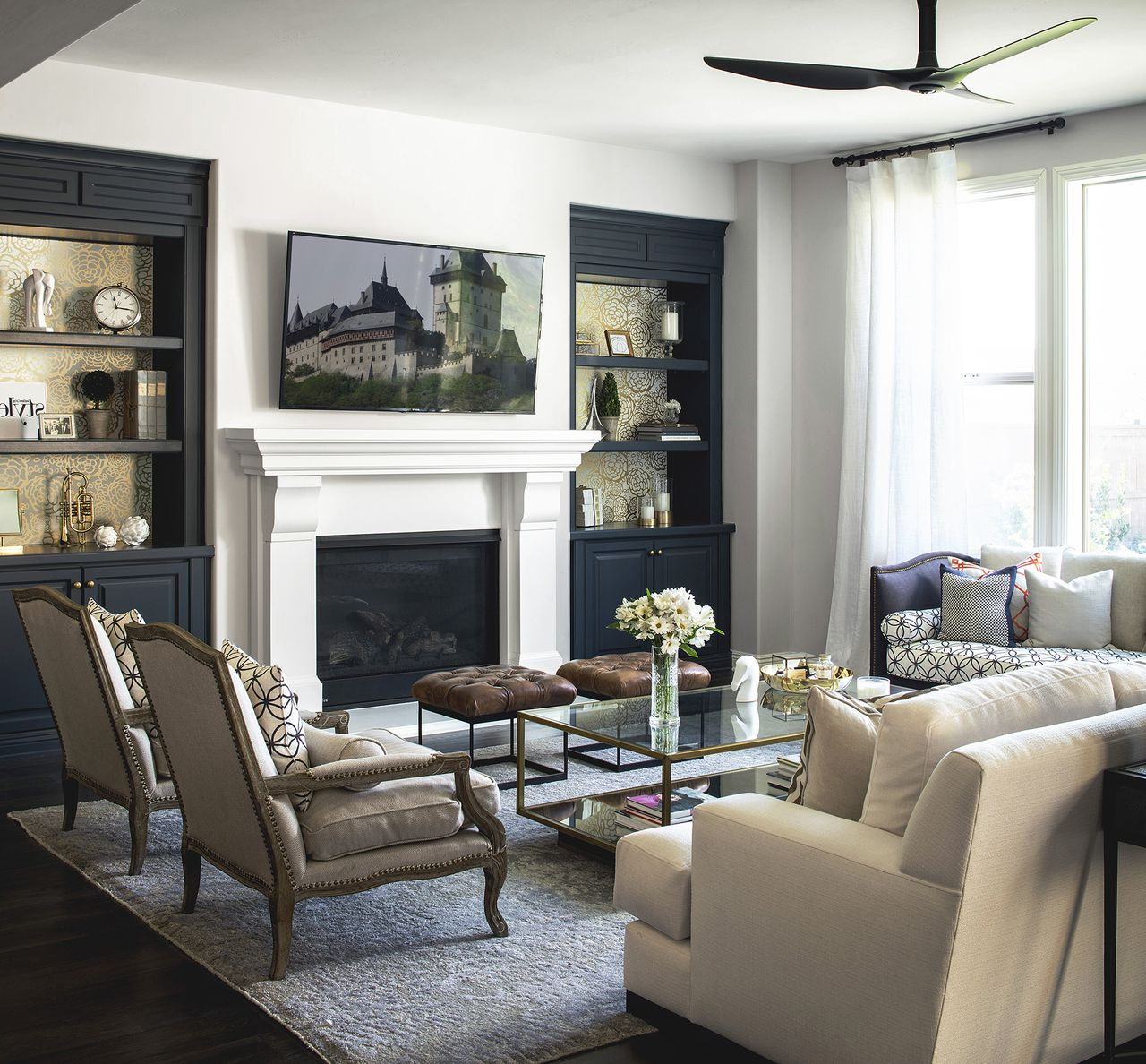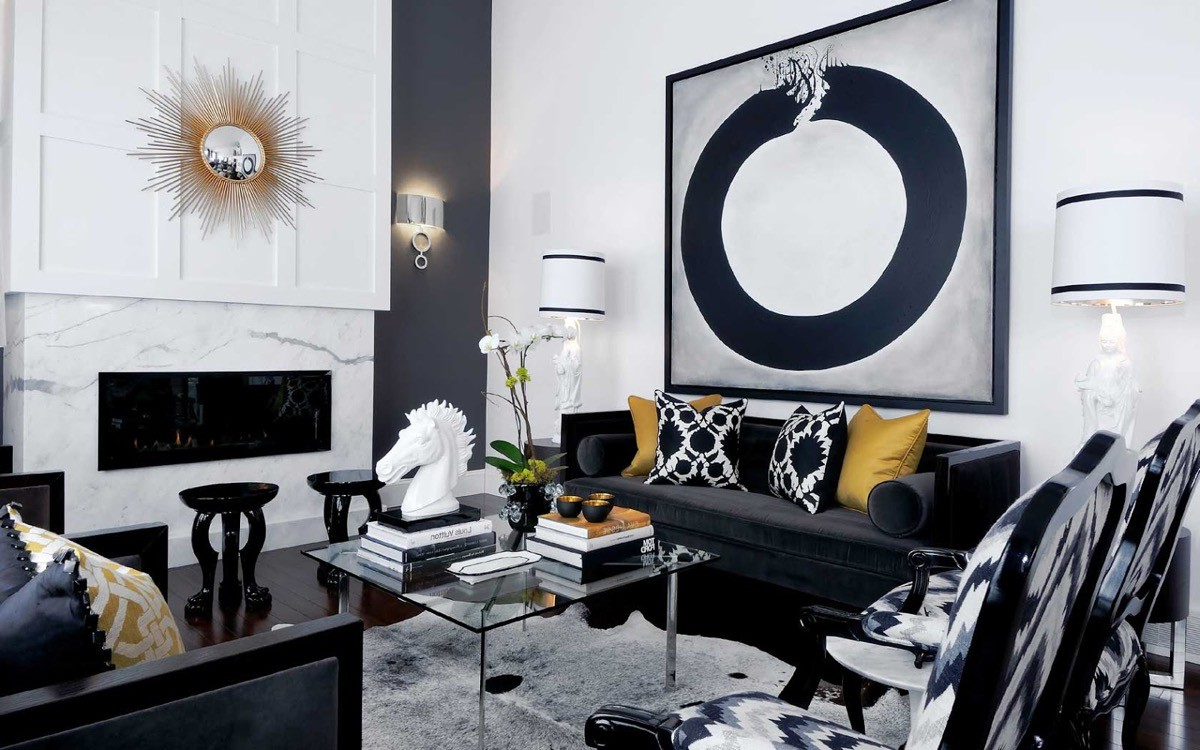White and black living rooms have a timeless appeal that transcends trends. They offer a clean canvas that can be transformed from stark and clinical to warm and sophisticated with thoughtful design choices. These two colors create a powerful visual contrast that, when balanced properly, can elevate any space into something truly special.
There’s something undeniably elegant about a well-designed white and black living room. It’s the kind of space that feels both fresh and refined, modern yet welcoming. But let’s be honest – it’s easy to make this color combination look cold, sterile, or overly dramatic if you’re not careful. The secret lies in understanding how to balance these powerful colors with textures, lighting, and thoughtful accessories. This guide will walk you through everything you need to know to create a living room that moves from stark to sophisticated seamlessly.
The Foundation: Understanding White and Black Dynamics
Before diving into styling techniques, it’s important to understand how white and black interact in interior design. White acts as a light refector, making spaces feel larger and more open. Black, on the other hand, creates drama and depth while anchoring the room. Together, they form a classic high-contrast duo that can be surprisingly versatile.
Consider the different shades within each color family. White isn’t just one color – it ranges from pure white to off-white to cream. Black also varies from jet black to charcoal to graphite. Choosing the right variations is crucial for avoiding harsh contrasts that can make a room feel unbalanced.
Think about how these colors work together like a musical chord. The right combination creates harmony, while the wrong mix can sound discordant. A room with too much stark white and too little black might feel flat and uninspired. Too much black and not enough white can make the space feel oppressive and dark.
Choosing the Right Shades for Your Space
Selecting the appropriate whites and blacks for your living room requires careful consideration of several factors:
• Room size and natural light – Larger rooms with lots of windows can handle deeper blacks, while smaller spaces benefit from lighter tones
• Personal preference – Do you prefer dramatic contrast or softer sophistication?
• Existing furniture and decor – Consider what you already own and how new pieces will complement them
• Intended mood – Are you going for minimalist elegance or bold statement?
For small rooms, opt for lighter whites like warm cream or soft ivory. These reflect light and make the space feel bigger. In larger rooms, you have more flexibility to experiment with deeper whites or even grayish whites that add sophistication.
When choosing black elements, consider using charcoal or graphite instead of pure black. These are more forgiving and create better contrast with whites. You can always add pure black accents later if needed.
Creating Visual Balance Through Texture
One of the most effective ways to soften the starkness of white and black is through texture. The human eye loves variety, and incorporating different materials can transform a simple color scheme into something rich and engaging.
Start with textiles like throw pillows, blankets, and area rugs. Choose fabrics in various weaves and materials – velvet, linen, wool, and cotton can all add warmth and dimension. A deep navy blue velvet sofa with white and black throw pillows creates a beautiful contrast.
Natural materials like wood, stone, and plants bring life to monochromatic spaces. A wooden coffee table with warm tones can anchor a black and white room beautifully. Plants add organic elements that soften the hard edges of stark color combinations.
Consider the contrast between smooth surfaces and textured ones. A sleek black console table next to a soft white sectional creates interesting visual dynamics that prevent the space from feeling too uniform.
Lighting: The Secret Weapon for Sophistication
Proper lighting can make or break a white and black living room. Without it, these colors can appear cold and clinical. Good lighting adds warmth and creates layers of interest that make the space feel lived-in and comfortable.
Layer your lighting with multiple sources. Start with ambient lighting from ceiling fixtures or recessed lights. Add task lighting with table lamps or floor lamps for specific activities. Finally, incorporate accent lighting to highlight architectural features or artwork.
Warm lighting is particularly important in black and white spaces. Cool white bulbs can make everything look harsh and unforgiving. Instead, try dimmable lights with warm white or even amber tones to create a cozy atmosphere.
Don’t forget about natural light! White walls reflect sunlight beautifully, but consider how the light changes throughout the day. Position furniture and artwork to take advantage of natural light patterns rather than blocking them.
Furniture Selection and Arrangement
Furniture plays a crucial role in transforming a stark white and black living room into something sophisticated. The key is choosing pieces that complement rather than compete with your color scheme.
Classic mid-century modern pieces often work exceptionally well in black and white spaces. Think of sleek, low-profile sofas with clean lines and minimal ornamentation. These pieces naturally fit into monochromatic schemes while adding character.
Consider mixing furniture styles for visual interest. A contemporary black leather sofa paired with a vintage white wooden side table creates a dynamic contrast that feels intentional rather than chaotic.
The arrangement matters just as much as the pieces themselves. Create conversation areas with furniture positioned to encourage interaction. Leave plenty of breathing room around seating areas, and ensure there’s a clear path through the room.
Balance is essential. If you have a large black entertainment center, balance it with lighter white elements like a tall white bookshelf or a white console table.
Accessories That Elevate the Design
The finishing touches in a white and black living room are where the magic happens. Thoughtful accessories can transform a simple space into something truly special.
Artwork is perhaps the most impactful accessory. Choose pieces that feature black and white elements or incorporate subtle hints of color. A large black and white photograph can become a stunning focal point.
Decorative objects like vases, books, and sculptures add personality and interest. Look for items in different shapes and heights to create visual rhythm. A tall white vase with a black base, surrounded by books of varying sizes, creates an appealing arrangement.
Mirrors are particularly valuable in black and white spaces. They reflect light, making rooms feel brighter and more spacious. Choose frames that complement your overall aesthetic – black frames for dramatic contrast or silver for a more contemporary feel.
Don’t overlook the importance of plants. They bring life and color to monochromatic schemes. A single large plant like a fiddle leaf fig can anchor a corner and provide natural texture that softens the starkness of white and black.
Avoiding Common Mistakes
Even experienced designers sometimes fall into traps when working with white and black. Here are some common pitfalls to avoid:
• Overusing one color – Having too much white can make a room feel sterile, while too much black can make it feel heavy or oppressive
• Ignoring scale and proportion – Large black furniture can overwhelm a small room, while small white pieces might get lost in a large space
• Neglecting texture – A room that’s all smooth surfaces can feel cold and uninviting
• Poor lighting choices – Cool white bulbs can make everything look harsh and clinical
• Forgetting about personal comfort – The space should feel welcoming and lived-in, not sterile and formal
Remember that balance is key. A well-designed room should feel intentional and purposeful, not random or chaotic. When in doubt, add a splash of another color or introduce natural elements like wood or plants to soften the starkness.
Putting It All Together: Real-World Examples
Looking at actual examples can provide inspiration for your own space. Consider a living room with a white sectional sofa against a black accent wall. The contrast is dramatic but balanced by warm wooden coffee tables and textured throw pillows in complementary colors.
Another example features a black and white geometric rug that anchors the space, with white chairs and a black coffee table. The room includes plants and artwork that add personality without disrupting the color balance.
A third approach uses varying shades of white and black throughout the space – from light cream walls to charcoal accents, with the occasional pop of color in accessories. This creates sophistication without sacrificing warmth.
Each of these examples demonstrates how the principles discussed can be applied in practical ways. The key is experimentation and finding what works best for your specific space and lifestyle.
Creating a living room that transitions from stark to sophisticated with white and black is an art form that combines technical knowledge with creative intuition. It’s about understanding how these powerful colors interact and then using texture, lighting, furniture, and accessories to create a space that feels both modern and inviting.
The journey from a clinical white and black room to a sophisticated living space isn’t just about following rules – it’s about creating a place that reflects your personality while maintaining visual harmony. Every element should serve a purpose, whether it’s adding warmth through texture, creating drama through contrast, or establishing a sense of calm through careful balance.
Remember, the best designs are those that feel effortless and lived-in. They should make you want to stay in the room, not just admire it from a distance. With patience, attention to detail, and a willingness to experiment, your white and black living room can become a true masterpiece of modern design that stands the test of time.















